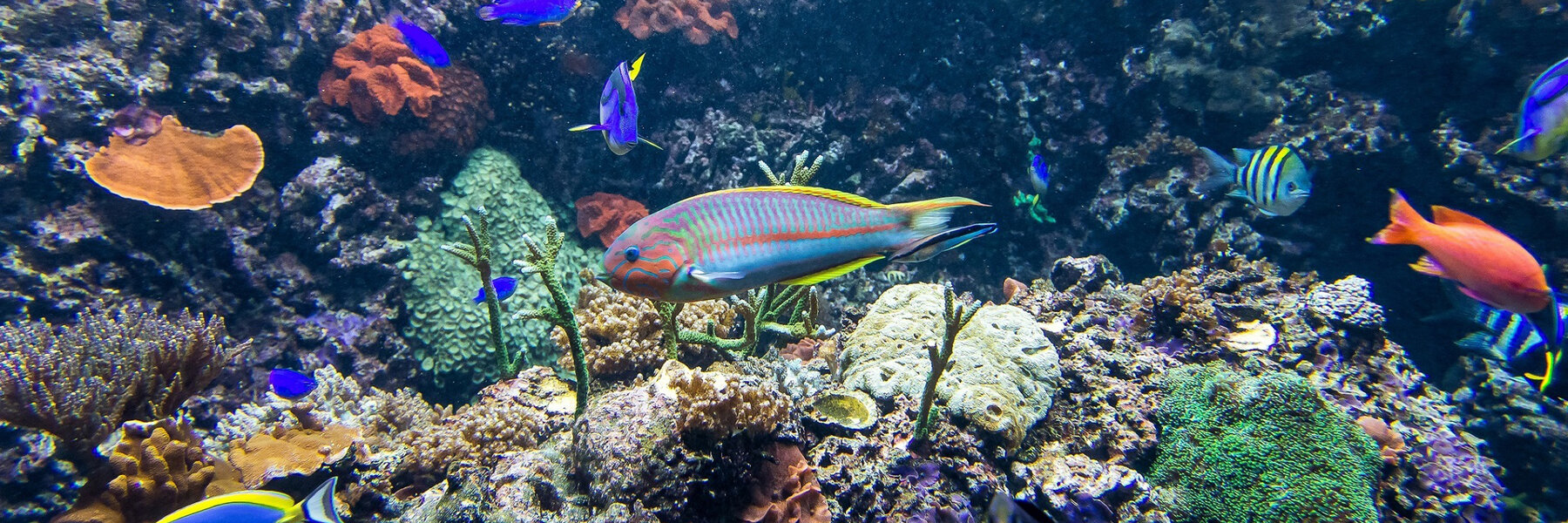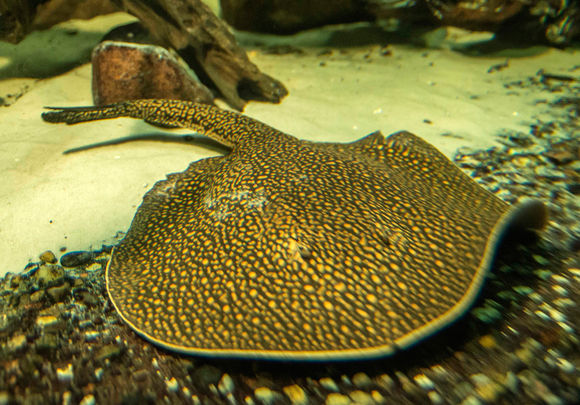
Falconer freshwater stingrays
Potamotrygon falkneri
Falconer freshwater rays, also known as spotted freshwater rays, belong to the family of freshwater rays. This species, which can be found in northeastern Argentina, central Paraguay and western Brazil, prefer to swim near the waterbed and can be rarely seen in open waters.
What you should know about rays
Freshwater stingrays, in comparison to their distant relatives in the sea, are almost completely round and impress with their different, strikingly beautiful colours and patterns that are species-dependent. Thornback rays or the jet-black, white-spotted leopoldi rays can also be seen doing their orbits in the Aquarium Berlin.
Characteristics
- Origin
South American rivers
- Habitat
shallow and slow flowing waters
- Diet
Molluscs, fish, insect larvae and crustaceans
- Status
unknown
- Size
60 to 80 cm
- Weight
unknown
- Breeding period
approx. 20 weeks (ovoviviparous)
- Achievable age
over 20 years
Threat Categories of IUCN


Elegant and versatile waterbed swimmers
The pectoral fins of the ray ensure drive with ondulating movements. It is able to even swim backwards for a short while. The ray sticks its pelvic fins into the soft bed for braking or uses them for drive when swimming slowly – and it seems as if it's walking along the bed.
Rough manner or love bite?
The behaviour of the freshwater rays among themselves could seem a bit harsh to us humans. A bite into the fin by a ray is practically entirely normal here. Males not only apply it to the female during courtship, but also when scrambling for food. Even bites in the back can happen, but rays only do this to inflict minor injuries or 'bruising' in this case.
Their poisonous sting is dreaded
All stingrays have a powerful, serrated poisonous sting on their long tail. If a ray feels threatened, then it beats it's tale mounted with a poisonous sting towards the attacker. Divers and aquarists fear this situation, for even if the poisonous sting of the ray is not fatal, it nevertheless leaves extremely painful and poorly healing wound.
Is it true, that ...?
… Rays are trusting towards keepers? Trusting no, but curious yes. Rays dispense with their initial shyness towards the keepers very quickly and examine all that is new in their tank with interest, whilst coming a lot closer to feeding hands. But be careful because being too confident with the handling of rays can turn nasty – they get scared, they react with lightning speed.

